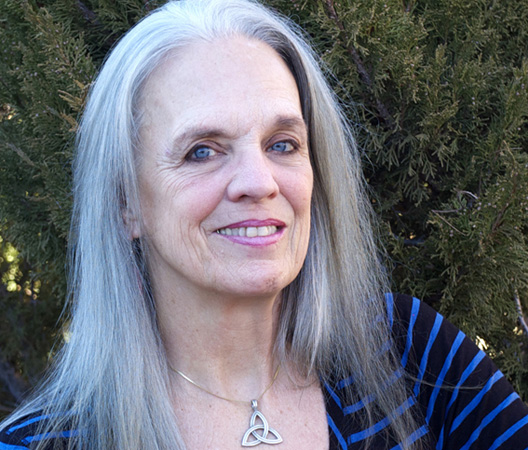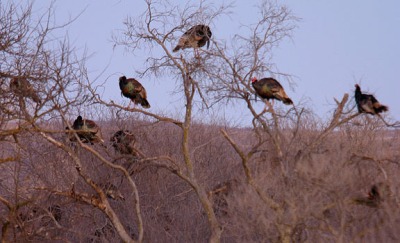This was originally posted on October 25, 2020
In the United States turkeys are equated with Thanksgiving. But there is so much more to Turkey – a gentle creature who forms strong attachments. Reputed to be dumb, Turkey is in fact quite intelligent and curious, with the ability to solve problems. Turkeys have an excellent understanding of the details of their location which makes them so successful at feeding themselves. They also love to play and to cluck along with music.

Turkeys, indigenous to North America, evolved over 20 million years ago and share a common ancestor with grouse, pheasants and other fowl. Two species of wild turkey exist today – the wild turkey of eastern and central North America of which there are 5 sub-species and the ocellated wild turkey of the Yucatan.
Yet why is turkey named turkey? Strangely enough it was a mistake. English colonial settlers thought turkeys were a type of guinea fowl which England imported from Turkey – thus the name. The Spanish word for turkey is guajolote which is derived from the Nahuatl (Aztec) name huexolotl.
Abundance, Connection With/Awareness of Mother Earth, Having Enough
Turkeys, domesticated by the native peoples of Mexico perhaps as early as 300 B.C.E., has long been symbolic of abundance. The Maya viewed turkeys as vessels of the gods and venerated the ocellated wild turkey which roams that land. They were valued for their multi-colored feathers and regal bejeweled appearance – sporting a blue head with yellow gem-like nubs, bright fanned tail feathers and a yellow-tipped knob on the crown.
One sub-species, the eastern wild turkey, numbers more than 5 million. Turkey, who prefers a woodland habitat near water is a successful omnivore in finding the seeds, nuts and insects it prefers.
And though a bird who can fly in short bursts of up to 55 mph, Turkey is essentially an Earth creature – pecking the ground, socializing in fields, nesting in thickets – all while clothed in Earth colors with a dash of sky thrown in.
Turkey highlights the connection we all share to Mother Earth and of the blessings of abundance Earth offers her children. Yet Earth’s resources are not limitless. Turkey reminds you to honor what is offered while caring for Earth from which these gifts come. Remember no gift is too small. This approach offers a foundation to our well-being and brings harmony with all your relations – Earth, community, family and self.
Earth’s Blessings, Fertility, Gratitude
Native Americans of North America view Turkey as the giver of agriculture and a symbol of fertility.
A White Mountain Apache tale recounts that long ago when animals could speak Turkey overheard a boy complaining of hunger to his sister. Turkey, with its giving nature took pity. She shook herself all over four times. Each time a different colored corn fell from its feathers – black, blue, yellow and white. Turkey instructed the children to plant the corn and thus agriculture began.
Archaeologist have found burial sites in the Four Corners area of the U.S. – Colorado, Utah, Arizona and New Mexico – with ceremonial arrangements of whole turkeys dating back from 3 or 4 B.C.E. to 1500 C.E. It appears the turkeys were not eaten at this time but only used for ceremonial purposes. Young turkeys were found interred under ceremonial plazas, suggesting a link to fertility and spring planting.
Turkey bestows the gift of fertility – literal and symbolic – and helps with harvesting the physical and spiritual fruits of your efforts. Turkey calls you to be grateful for what is offered, for blessings of community and for your inner riches. Turkey guides you through the changes of life with this attitude of gratitude.
Sacrifice, Satisfaction
The Maya both venerated and sacrificed turkeys. Domesticated turkeys, imported from Mexico, were sacrificed to insure fertility for the coming year. Considered messengers of the gods, Turkey was viewed as an alter-ego to the ruler. Their use increased the standing of the ruler who was able to provide the sacrificial victim without need for hunting.
Turkey reminds you that at times personal sacrifice is required in order to protect and promote the good of the community, showing you positive and useful ways to give of yourself. Through this sacrifice and subsequent renewal, Turkey promotes satisfaction with your harvest.
Community, Generosity, Nourishment
Turkeys are gentle, inquisitive, social animals who enjoy the company of others, including humans. Turkeys, who love to explore, recognize each other by their unique voices. They show affection, forming strong bonds with each other and with humans. Turkeys love to play and have even been known to cluck along with songs.
Only male turkeys make the gobbling sound we associate with turkeys. Each one has its own distinctive gobble which when combined with strutting their stuff attracts females. Male siblings group together to woo the females but only one gets to breed. Females use clucks and chirping to communicate.
Wild turkey mothers raise and protect their chicks for five months. The male chicks, called jakes, leave their mother and form a sibling group which generally lasts for life. They are utterly loyal to each other and hostile to outsiders. Older male turkeys have their own group while hens live together in flocks with their female poults.
Turkey uses it excellent eyesight and concern for community for protection. While scavenging the forest floor at least one turkey remains vigilant, constantly scanning the trees for possible predators. But at night they are vulnerable, preferring to sleep in trees which provide safety from predators. Upon waking they call softly to each other before descending, checking that the flock is safe.
Native American tales of turkeys reflect the affairs and activities of humans. Some tribes have turkey as a clan animal. Turkey feathers were used in the ceremonial clothing of many tribes and to stabilize arrows.
Various eastern and southern tribes – the Caddo, Lenape, Shawnee and Seminoles – dance the Turkey Dance which commemorates a tribe’s successful endeavor.
Turkey teaches you how to find nourishment and calls you to honor Mother Earth and all sources of nourishment. Turkey opens your eyes to the importance of working together with your community and the value of generous sharing.
Divinatory
When Turkey – symbol of abundance – appears you are reminded to honor yourself, Earth’s natural world and the nourishment she provides – physical, emotional and spiritual. Turkey encourages you to maintain a caring harmony with the land and promotes the understanding that therein lies the foundation of our abundance. Turkey guides you to feelings of well-being, contentment and gratitude for what you have, alleviating the need to accumulate possessions. Turkey teaches that personal sacrifice – useful means of giving of yourself – benefit your community. In these ways you can receive the blessings of community, connection, abundance and the openness of heart to share these blessings with the world.
Sources: History, Native American Mythology, Southwest Crossroads, Ask-Angels.com. Science, Wikipedia, Smithsonian Magazine, Live Science, Britannica, Four Paws, Scientific American, Spirit Animal Totems, Trusted Psychic Mediums
Judith’s deck of Celtic Goddess Oracle Cards is available now. You can order your deck on Judith’s website – click here. Experience the wisdom of the Celtic Goddesses!

Judith Shaw, a graduate of the San Francisco Art Institute, has been interested in myth, culture and mystical studies all her life. Not long after graduating from SFAI, while living in Greece, Judith began exploring the Goddess in her art. She continues to be inspired by the Goddess in all of Her manifestations, which are found everywhere in the natural world. In recent years Judith began studying the Goddesses of her own ancestors, the Celts, resulting in her deck of Celtic Goddess Oracle cards. She is now working on her next deck of oracle cards – Animal Spirit Guides. Originally from New Orleans, Judith makes her home in New Mexico where she paints as much as time allows and sells real estate part-time. Give yourself the gift of one of Judith’s prints or paintings, priced from $25 – $3000.







Thank you for your turkey info. When I lived deep in the country, I was often startled by men in camoflague even wearing camo face paint–turkey hunters–on my morning walks. They explained turkeys were very elusive, which possibly rationalized them hiding in ditches. Turkeys can see you, hear you, and smell you long before you notice them. The turkey hunters almost never ever caught a turkey, which makes me think turkeys are smarter than a heavily armed hunter.
LikeLike
Morgan,
It is true that turkeys are quite intelligent birds even though they are always called dumb. Sounds like they really outsmarted those hunters. Yay turkeys!
LikeLike
I love turkeys and have about 50 who visit me here and live here for most of the year. When they don’t appear a predator is in the area….
I have one turkey who makes a strange “eeee” call as he stands under the caged bird feeder. One chickadee arrives and drops a single seed to the ground which turkey eats – this behavior is repeated over and over…. Turkeys know which room I am in and will come to the window to have me throw them a little seed – making that same high pitched sound. I leave nothing on the ground because of too many squirrels.
LikeLike
Sara,
What great turkey stories you have to share. Sounds like that turkey made friends with the chickadee – so cool
LikeLike
As always Judith, I love reading what you have to say about the animal spirits. Where I live in Costa Rica, the Spanish word for turkey is “pavo” and interestingly, a peacock is called “pavo real”.
LikeLike
Jan,
In Mexico turkey is called “pavo” if it’s the meat for eating whereas the birds are called guajolotes. Are the birds themselves called “pavos” in Costa Rica?
LikeLike
Pavo is used for both the meat and the bird. There is a campesino word for turkey “chompipe”, but it is rarely used.
LikeLike